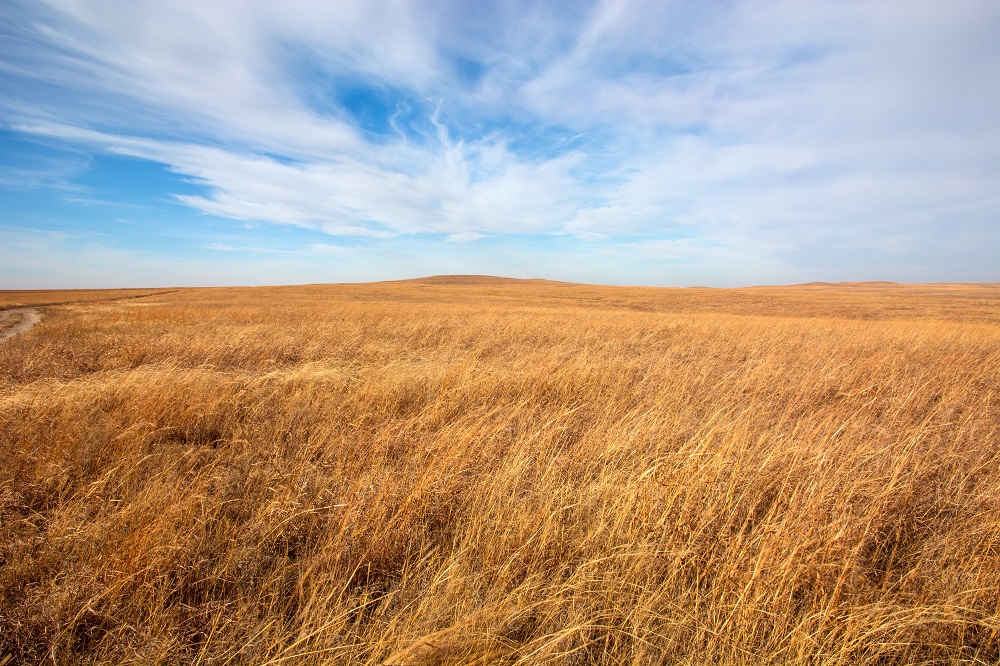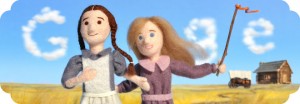By Jennifer Albers-Smith
If any of you happened to use Google on February 10, you would have seen the customized home page for Laura Ingalls Wilder’s birthday. Dead for 58 years, her name is still synonymous with Westward Expansion and the nineteenth century prairie. All these years later, her literature continues to have a life of its own. After all, few go through childhood without reading Little House on the Prairie.
I loved the Little House books as a child (and now as an adult) and read them all several times. Her writing took me to another time and place, a place that I found fascinating, especially during a time when the game Oregon Trail was immensely popular on floppy disk. And don’t forget the Little House TV series! When my parents and I traveled West on a two-week vacation, we stopped along the way at some of the places the Ingalls family stopped; we even saw the giant wagon ruts in Wyoming.
When Wilder wrote her first book Little House in the Big Woods (1932), her intent was to preserve her family’s stories. But after its success, she realized “what a wondering childhood [she] had.”
“How I had seen the whole frontier, the woods, the Indian country of the great plains, the frontier towns, the building of railroads in wild, unsettled country, homesteading and farmers coming in to take possession. I realized that I had seen and lived it all…. I wanted children now to understand more about the beginnings of things, to know what is behind the things they see–what it is that made America as they know it….”[1]
And Wilder’s books keep making the news. Recently, the publishing of Pioneer Girl: The Annotated Autobiography by the small South Dakota Historical Society Press made waves – from Publisher’s Weekly to The National Enquirer. Currently on its fourth printing (from a run of 5,000 at the start to 75,000 in its third[2]), it’s quite an elusive book. I haven’t been able to get my hands on it yet as it is sold out everywhere online–and, believe me, I’ve tried. But according to what I’ve read in the news and on blogs, this new book gives insight into some of the darker parts of Wilder’s past and the reality of survival on the wild prairie.
Pioneer life was hard. And sometimes Wilder’s books relay that hardship, like her family’s near starvation during The Long Winter and the knife in the dark at the Brewsters in Little Town on the Prairie. And who can forget Mary losing her eyesight to scarlet fever? A paper published in Pediatrics in 2013 questions whether Mary really lost her eyesight to scarlet fever. Instead, they believe it was likely meningoencephalitis, an infection of the brain and the tissues surrounding the brain[3]. And did you know Wilder had a younger brother Charles Jr (nicknamed Freddie)? He died at the age of nine months, and she never mentions him in any of her Little House books. Did Wilder purposely gloss over and modify these stories that have only now come to light in Pioneer Girl because they aren’t ones she remembers well or because she chooses to remember only the more idyllic and fun parts of her life? Or was she just censoring the hardships for younger readers?
So while I wait for Pioneer Girl to be reprinted and delivered (fingers-crossed for April!), I’ll keep reading my The Little House Cookbook: Frontier Foods from Laura Ingalls Wilder’s Classic Series, which has been truly fascinating. I would highly recommend it to both lovers of food and of nineteenth century pioneer life.
As we celebrate Women’s History Month, I am grateful for Laura Ingalls Wilder and her legacy as an American classic author. Her works lit a flame in me, and that flame has only glowed brighter as I have grown and fostered my love of American history and classic literature.
[1] “Laura Ingalls Wilder.” Encyclopedia of World Biography. Vol. 18. Detroit: Gale, 1998. Biography in Context. Web. 3 Mar. 2015.
[2] “An unexpected hit.” Publishers Weekly 9 Feb. 2015: 14. Literature Resource Center. Web. 3 Mar. 2015.
[3] “Laura Ingalls’ Sister May Not Have Lost Eyesight To Scarlet Fever.” All Things Considered 7 Feb. 2013. U.S. History in Context. Web. 3 Mar. 2015.
[alert-info]
 About the Author
About the Author
Jennifer loves her children, dogs, and Jane Austen. She has a B.A. in English and Sociology from the University of Michigan, and spends her waking hours as a marketing director and feeding her family.
[/alert-info]nike blazer high sale cheap shoes amazon


